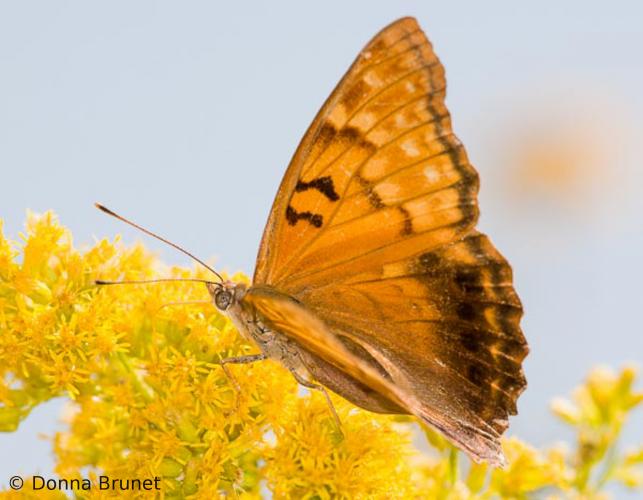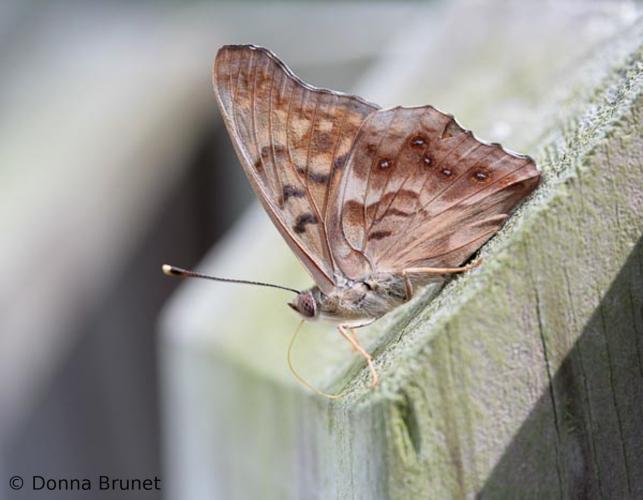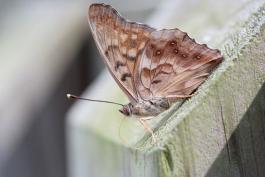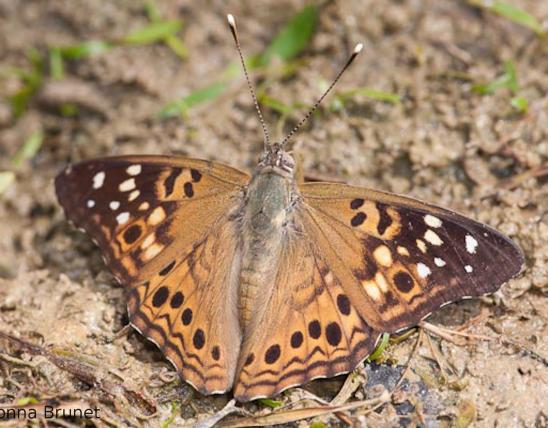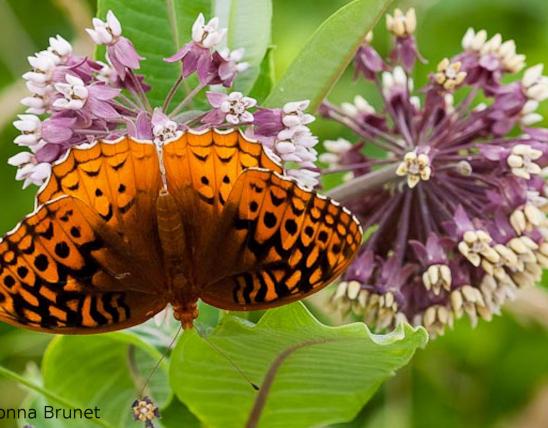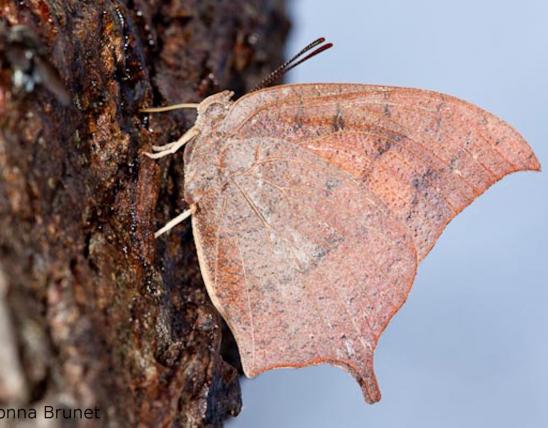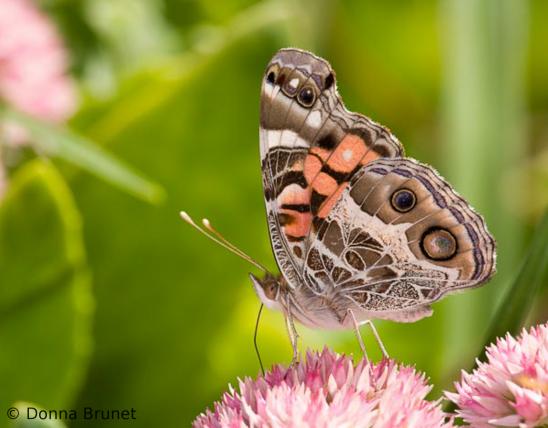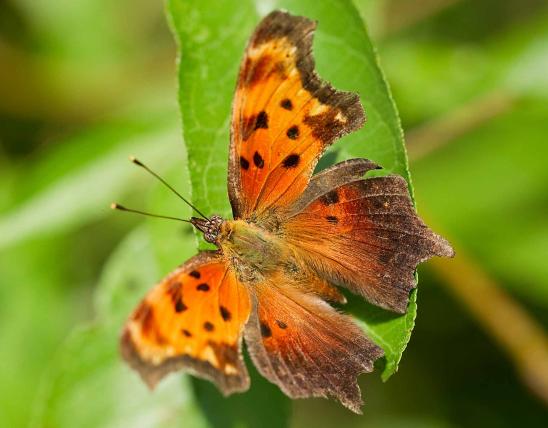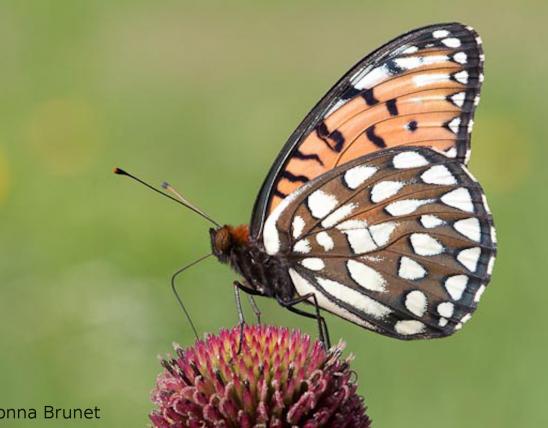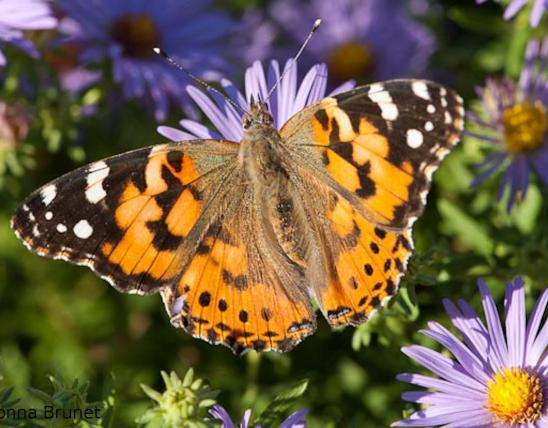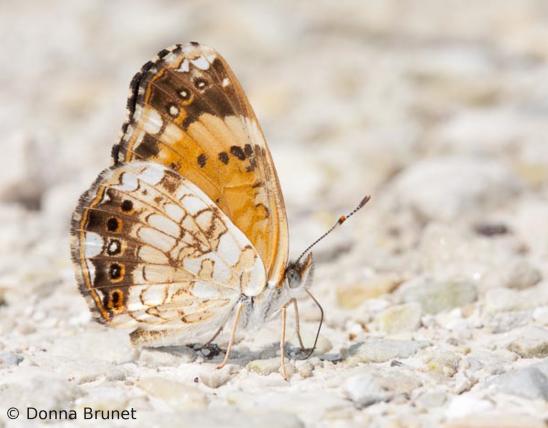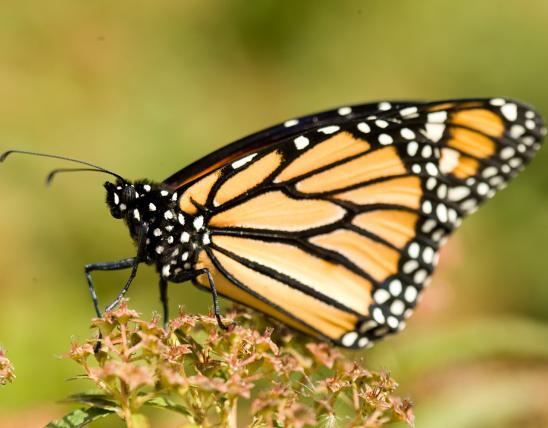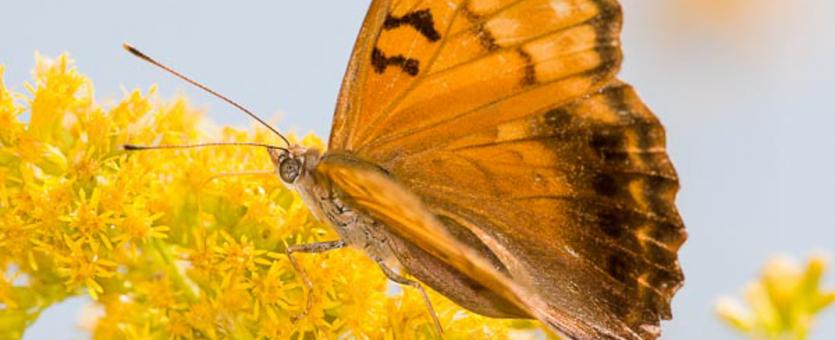
The tawny emperor is similar to the closely related and more common hackberry emperor (A. celtis), but it is more rust-colored, while the hackberry is a more neutral tan. Looking more closely, the upperside cell (the discal cell is the narrowly oval section at the front core of the forewing) of the tawny emperor has 2 dark, unbroken bars (this region on the hackberry emperor has one unbroken dark bar, while the inner dark “bar” is broken into 2 offset spots). Unlike the hackberry, the tawny’s forewing tips are not dark with white spots, and there is no distinct black spot on the forewing. Viewed from below, the hindwing has smudged, iridescent eyespots and is browner than that of the gray-brown hackberry, which has distinct eyespots.
Larvae are similar to those of the hackberry emperor: green with yellow-green and white stripes; the last segment is forked. The head is ringed with small fingerlike projects, and 2 larger projections on top of the head fork and resemble miniature deer antlers.
Wingspan: 1½–2½ inches.
Statewide.
Habitat and Conservation
Adults fly from June into October, slightly later than the hackberry emperor, and are less common and more localized in occurrence. They may be found anywhere that hackberry trees are found — which in Missouri is nearly anywhere! Habitat includes brushy wooded areas such as yards, parks, moist and even dry woodlands and forests, streamsides, fencerows, and so on.
Food
Caterpillars feed on the leaves of hackberry trees (genus Celtis). Missouri has three species: sugarberry (C. laevigata), dwarf hackberry (C. tenuifolia), and common hackberry (C. occidentalis).
The adults seldom visit flowers, but they do absorb nutrients from tree sap, rotting fruit, carrion, animal droppings, and damp sand or muddy ground. Like hackberry emperors, tawny emperors are attracted to sodium in human sweat, so they often alight on people.
Status
Double-brooded resident. More local and not as common as the hackberry emperor.
Life Cycle
Adults fly from June into October. Males perch head-down on tall objects in sunny, open locations waiting for females to approach. Females lay groups of 200 to 500 eggs on mature leaves. The young caterpillars are gregarious, feeding on hackberry leaves in large groups. When disturbed, the swarming caterpillars thrash around as a group to drive off predators. In the fall, caterpillars molt into a brown exoskeleton within silk-rolled leaves on branches, so they remain on the tree throughout winter. Groups of approximately 10 caterpillars overwinter together inside the rolled leaves.
Human Connections
The strong connection between this butterfly and its host trees is a reminder of the interconnectedness of life on earth. We humans find these connections both intriguing and inspirational. Apart from occasionally noticing the bark’s weird corky, warty projections, most of us don’t give much thought to hackberry trees. But emperor butterflies need these trees to survive.
Ecosystem Connections
When we think of “butterflies,” we usually picture the winged adults. But most of their lives are spent in immature, caterpillar stages. All stages provide food for predators. Imagine the bonanza when a titmouse or chickadee, hunting hungrily on a cold winter day, finds a group of 10 hibernating caterpillars in a rolled-up dead leaf!
